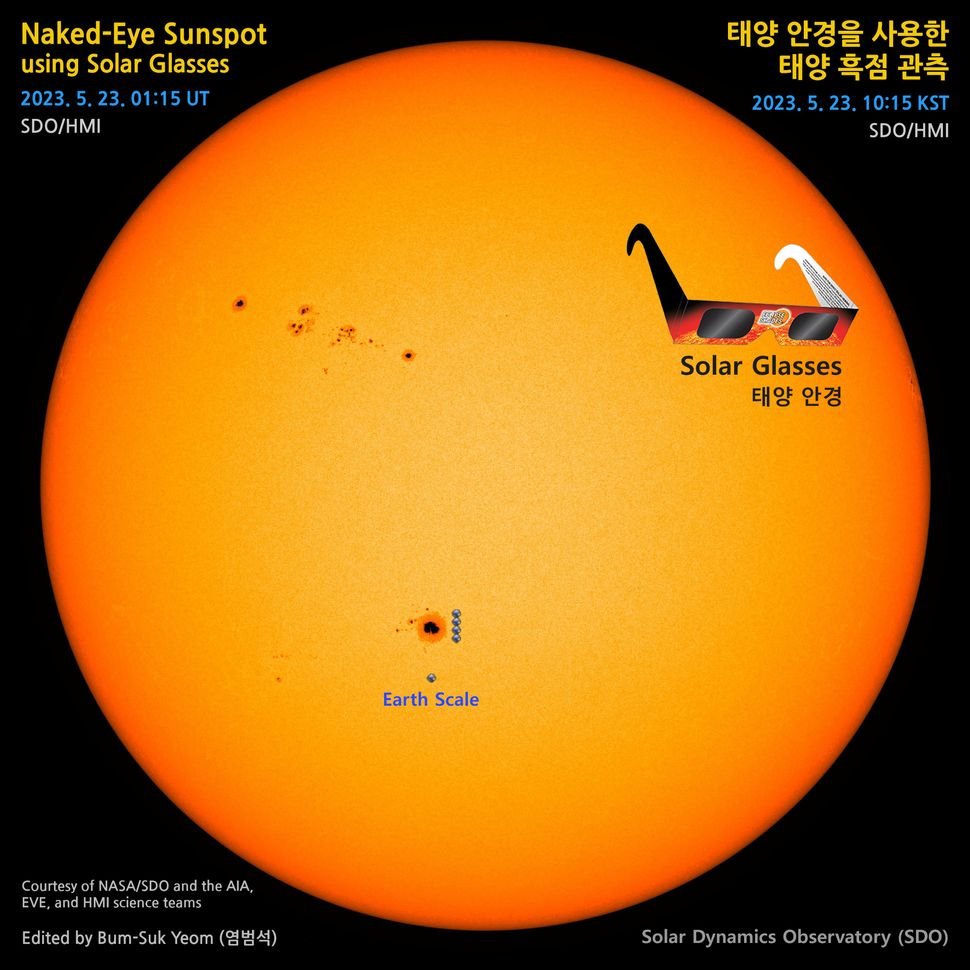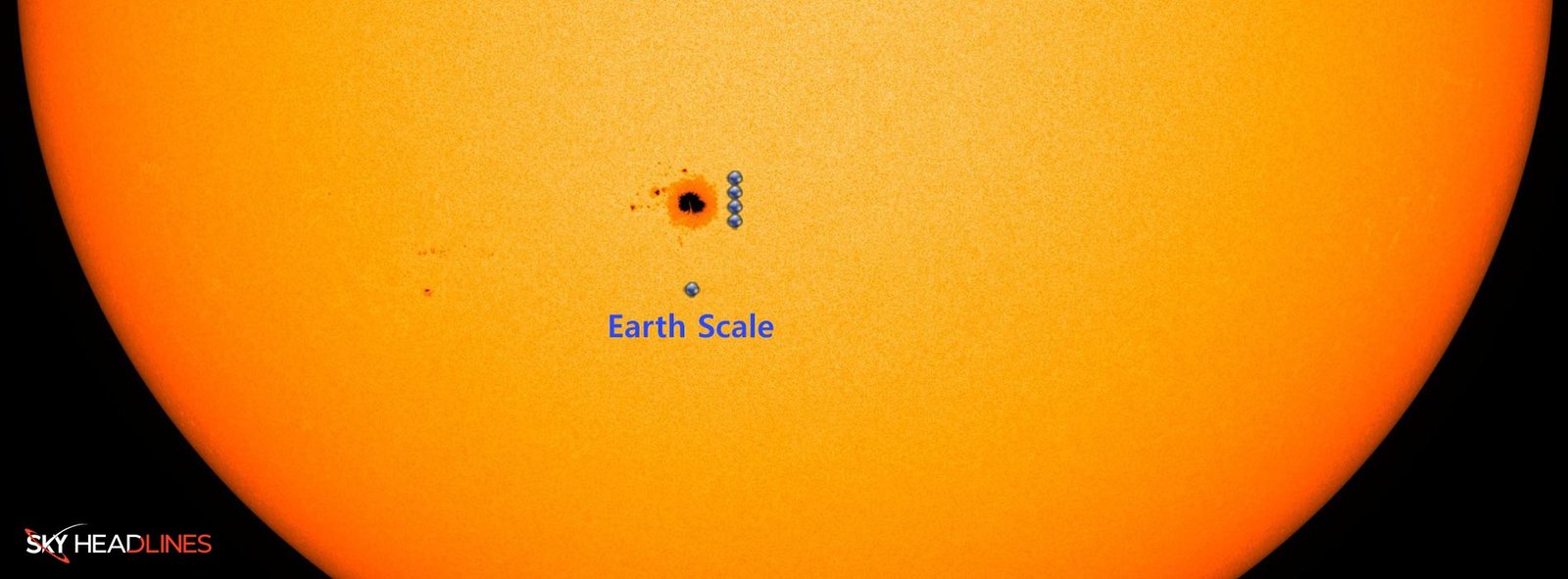You will be surprised to know that a new, and giant sunspot solar flare is currently visible, and to put the icing on the cake, it’s four times bigger than the size of the Earth and can be seen with the naked eye.
Sounds intriguing?
Yes, it is!
If you are an astrology person and love to gaze moon, and stars, then to your surprise, you can see this sunspot with the human eye. So, witness it before it’s too late.
Now, let’s get a deep overview of this crisp news, by seeing how you can see this giant sunspot, what is the largest-ever solar flare in history, and much other significant information that you will find worth reading.

Sun Activity May 31st, 2023. Giant Sunspot Solar Flare Today!
It should be known that the central point of solar activity remains concentrated in the southwest region of our sun.
The area where remarkable phenomena like prominences and exploding filaments continue to occur. So, if you are wondering how giant sunspot solar flares and prominences are related, then it is quite understood.
Solar prominences are just like plasma pools, that connect two sunspots.
And it is worth noting that sunspot AR3310, which had previously moved away from our view on the southwest limb, has shown a reappearance in the activity beyond the visible solar horizon.
On May 31, at 01:17 UTC, we witnessed a filament eruption from this area. Additionally, the southwest region also witnessed the most significant flare in the past day: an M1.4 eruption originating from the giant sunspot region AR3315 at 13:38 UTC on May 30.
You can effortlessly observe this sunspot with the naked eye, but obviously with the right, and appropriate eye protection. As this giant sunspot will soon rotate out of view in a matter of days, you should hurry, if you want to see it!
But, what are the Solar Flares? Do Solar Flares Come From Sunspots?
Over the next two weeks, as these active regions rotate across the surface of the sun, so there is a possibility of significant eruptions referred to as “solar flares.”
It is important to note that these eruptions can have potential impacts on satellite and spacecraft operations, power systems, radio communications, and navigation systems here on Earth, leading to possible disruptions.
Anticipating the current situation, let’s dig deep into the scientific, and updated information on solar flares causing disturbances.
How Will Giant Sunspots Affect the Earth? Will it Have Some Aftereffects too?
One thing that you should keep in mind is that during periods of sunspot activity, an escalation in solar flares is expected, leading to heightened geomagnetic storm activity affecting Earth.
Consequently, during maximum sunspots, there will be a boom in the occurrence of the Northern and Southern Lights, also known as auroras, along with potential disruptions in radio transmissions and power grids.
Hold on, yes we know you got stuck at “awe-inspiring Auroras”, but let’s see if something hazardous occurs if any sunspot explodes.
What Happens if Giant Sunspot Explodes?
If any disturbing thing happened, and this explosion occurred while the sunspot was directed towards Earth, there is a potential for a G5-class solar storm to occur.
Such a powerful solar storm can damage satellites, disrupt mobile networks and internet connectivity, and even result in power grid failures.
So, let’s see if our Earth has been ever hit by any giant sunspot in history. Let’s uncover some truth, and surprising backgrounds too!
Has the Giant Sunspot Solar Flare Ever Hit the Earth?
It would be to your surprise that Coronal Mass Ejections (CMEs) and their less potent counterparts, solar flares, occur frequently and have impacted our planet on multiple occasions!
One notable instance took place in September 1859 when a powerful solar storm hit Earth, causing significant damage to emerging communication technologies.
And if you are worrying about the effect of Earth, and not just on Earth, but humans too, let us unveil a fact here too!
As solar flares emit high-energy particles and radiation that can be hazardous to living organisms. So, if you are wondering about solar flares’ effects on humans, then fortunately, the Earth’s magnetic field and atmosphere protect against the effects of solar flares!
Now, let’s move toward the most commonly asked question that is sure also hitting you!
Will a Giant Sunspot Solar Flare Hit the Earth in 2025?
According to Berger, a senior space editor:
“There is a possibility of a significant eruption from the sun impacting Earth anytime from now until 2028 or 2029”
While this occurrence is unlikely to have a direct impact on everyday life, it emphasizes the need for NASA and satellite operators to remain vigilant and closely monitor solar activity!
Final Verdict:
Giant sunspot solar flare 2023 has been amazing, and before direct gazing at the sun, it is important to make sure that you have properly donned solar glasses, and it is equally important to avoid your direct eyes from the sun before removing the glasses.
Even minimal exposure to the sun’s unfiltered light can result in lasting harm to your eyes. So, fellas, safety first!





